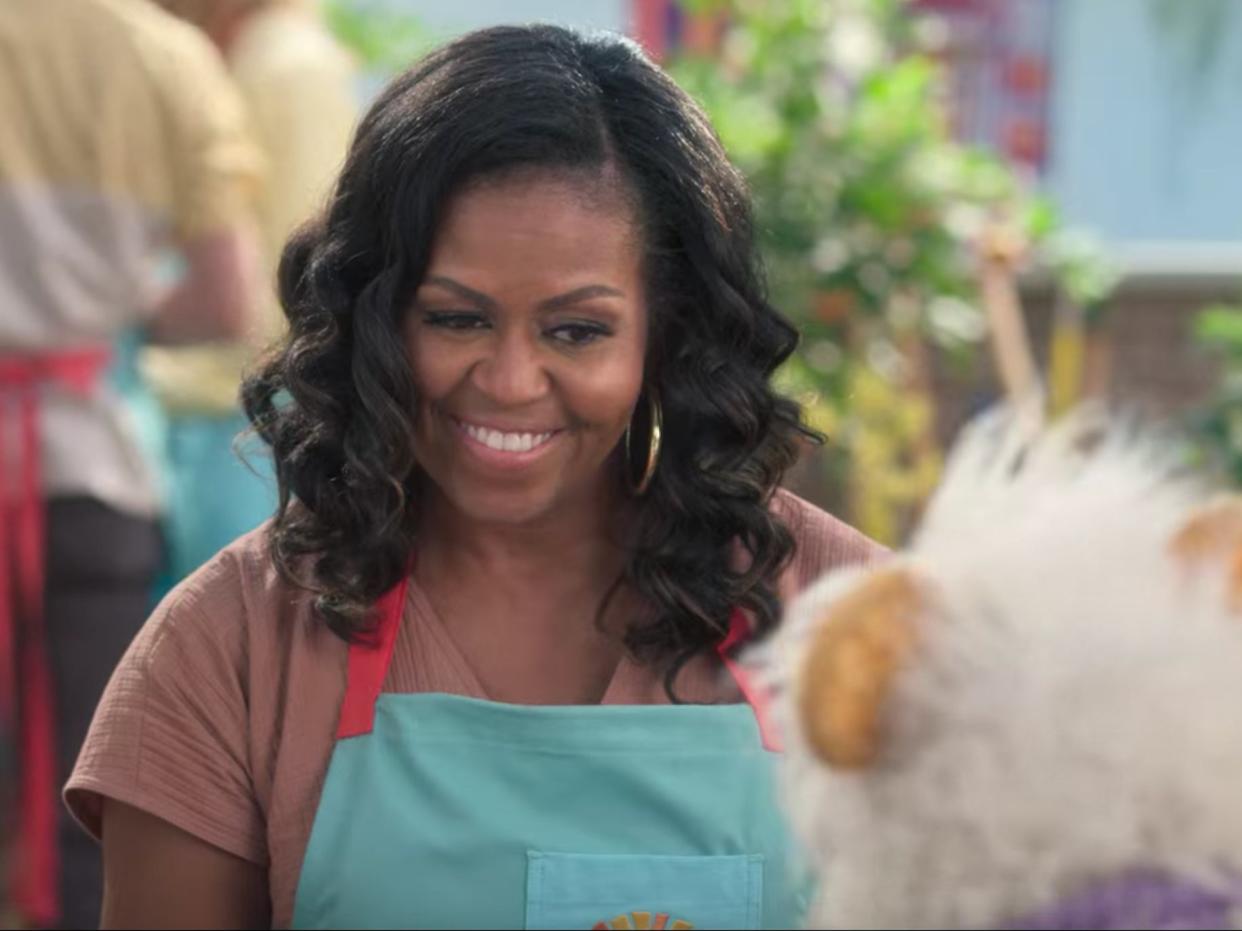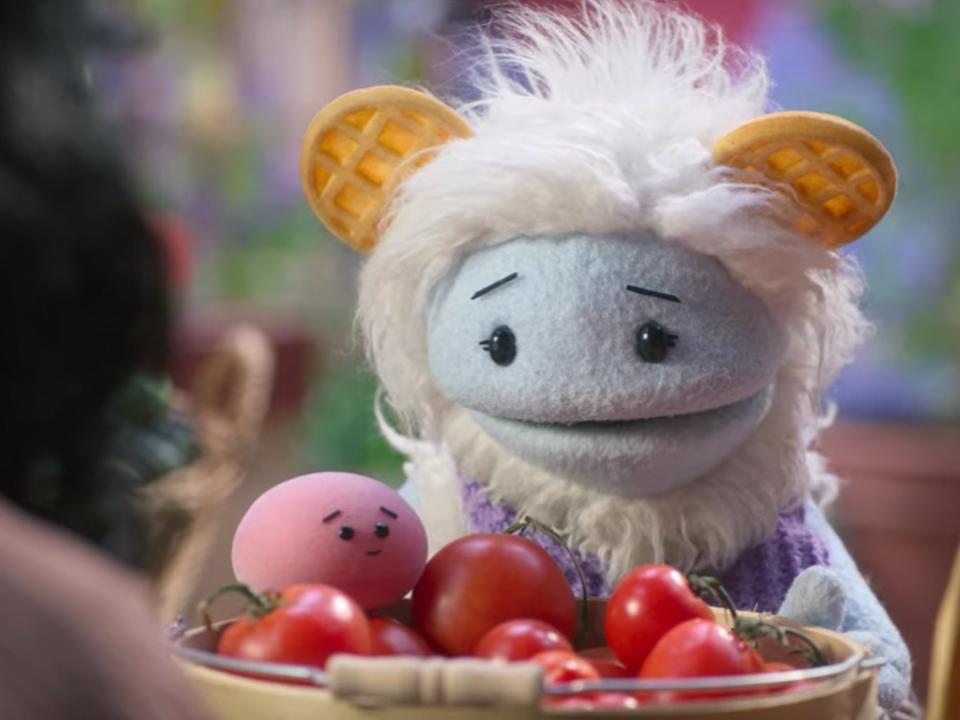Waffles + Mochi: Everything you need to know about Michelle Obama’s new cooking show

Waffles + Mochi, a new cooking show featuring Michelle Obama, premieres this Tuesday (16 March) on Netflix.
The six-episode series features the former first lady alongside an array of celebrity chefs and guests, including Sia, Mandy Moore, Rashida Jones, Common, Jack Black, and more.
It comes from Higher Ground Productions, the production company created in 2018 by Barack and Michelle Obama, which won an Academy Award for Best Documentary Feature for American Factory last year.
Created by Erika Thormahlen and Jeremy Konner, Waffles + Mochi strikes a different tone: it’s aimed at preschoolers, although judging by early reviews, adults are watching too.
Each episode is themed after a specific ingredient or food item, which gets explored by the two titular characters – puppets named Waffles and Mochi, who dream of becoming chefs.
Here is everything you need to know about Waffles + Mochi:
Why Waffles and Mochi?
As mentioned above, Waffles and Mochi are two puppets who act as the show’s main characters. In the world of Waffles + Mochi, the pair dream of becoming chefs, but sadly live in “the land of frozen food”, where the only available ingredient is ice.
Luckily, the duo are hired as employees at a supermarket where all the food is “made of food” (as opposed to ice) – owned by none other than Michelle Obama.
From then on, they embark on a culinary adventure investigating a series of food items. The show’s 10 existing episodes focus respectively on tomatoes, salt, potatoes, pickles, mushrooms, eggs, herbs and spices, corn, rice, and water.

How can I watch the show?
The show has premiered internationally on Netflix, with all 10 episodes now available to subscribers.
What does each episode look like?
Each episode lasts for about 20 to 30 minutes.
Waffles and Mochi focus on one of the 10 food items listed previously, visiting locations such as Peru, Italy, Japan, South Korea, and several places in the US.
Guest stars include chefs José Andrés and Samin Nosrat, and performers Sia, Jack Black, Mandy Moore, Rashida Jones, Common, Zach Galifianakis, Tan France, and Gaten Matarazzo.
Fun fact: Michelle Zamora, the puppeteer behind Waffles, was spoon-fed a bite of each new dish tasted by the character in order to experience the same flavours as the character, in real time, and make her reaction more authentic.
Another fun fact: Nosrat’s new puppy Fava Bean was supposed to appear on the show, but ended up growling at the Waffles and Mochi puppets “just as Nosrat was telling Waffles that cooking brings everyone together like family”.
What have reviewers said about the show?
So far, they like it!
Vanity Fair’s Sonia Saraiya observed: “I suppose I could nickel-and-dime the creators for some of their choices, or to be exact, for perhaps not making enough choices; the show bristles with gimmicks and gags and surreal overlaps between puppet world and real world. Then again, it is a show with puppets made for children that wants to excite them about the foods that weird them out. Some sensory overload is called for. I love that this show highlights the grocery store as a site for wonder; we live in a flawed world, but the sheer spectacle of the American grocery store is a sight to behold and cherish.”
Robyn Bahr wrote in The Hollywood Reporter: “Waffles + Mochi is a feat of sensoaesthetics from the first moments of the pilot, when we're introduced to our fabric friends trying to cook ice cubes in their igloo. The art direction team uses a mixed media approach to world-building, utilizing practical effects, stop-motion animation, a full cast of puppets and toy miniatures for set exteriors that create a wonderfully haptic and sentimental diegetic space that evokes the opening moments of Mister Rogers' Neighborhood.”
Adrian Horton was nuanced, writing in The Guardian: “Taken as a whole, the series embodies the many peaks and occasional valleys of the Obamas’ brand of liberalism – a diverse cast emphasizing inclusion, earnest and optimistic in tone, though generally riding on the assumption that nutrition is more a matter of choice than access. There’s fair reason to be cynical about the crossover between politics and entertainment (and big dollars of streaming services), but it’s hard to fault a program that teaches kids to approach the foods they eat with curiosity, inclusiveness and a dose of background knowledge.”

 Yahoo News
Yahoo News 
